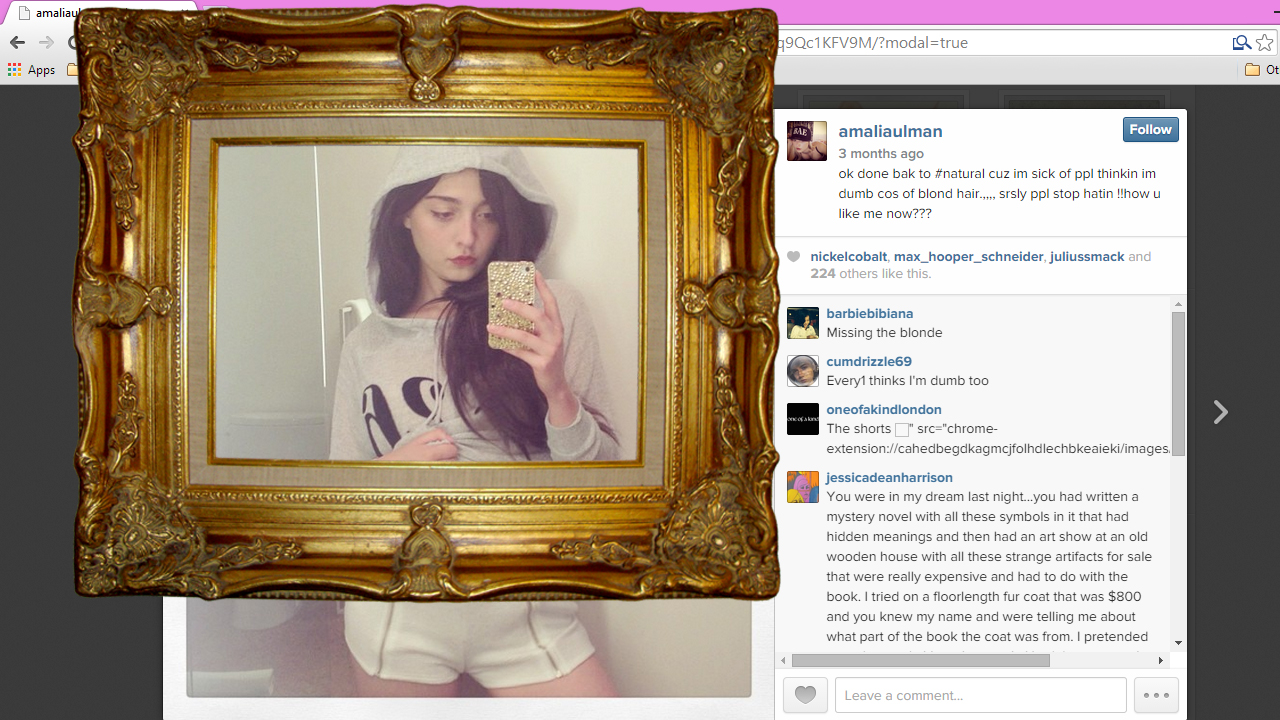The digital art non-profit Rhizome wants to make sure the content that artists put online will last forever and they are releasing a new tool that gets us one step closer to making that happen. Colloq is an archiving program Rhizome has been developing that saves content from the internet in a proprietary format. What makes it better than a screenshot is that it preserves links and functionality.
To demonstrate how it works, Rhizome put up this example using Amalia Ullman’s work. Ullman is an artist who has been using Instagram for a sustained performance that no one really knew was a performance. Beginning in April, she started posting photos on IG that were cliched, self-obsessed, sometimes sexy but mostly unremarkable. Captions would say things like, “I wish I was pretty.” She rapidly picked up a ton of followers and would regularly get hundreds of likes and comments. The project became stranger as she morphed through four different personalities and faked a breast-augmentation surgery. Now that the performance is over, it’s archived by Rhizome using Colloq. The format of Instagram and the comments are preserved just as they were but the home page separates each of the distinct personalities.
There is still development to be done on Colloq and just last week the Knight Foundation awarded a $35,000 grant to help with completion, but making it function is just the beginning. The question of who owns the content will often be an issue when it comes to many artworks. If an artist has made a piece on Tumblr or Facebook for instance, it could be argued that the content being archived belongs to the social network. As it is though, right now the only functioning copy is on the social network’s servers.
Jon Ippolito, a new media professor at the University of Maine tells the New York Times, “It puts the ability to capture data back in the hands of the individuals,” he says. “The user is in the driver’s seat, instead of the social network that now owns that user’s information.”
If Colloq is completed and works as promised it could be a major step towards giving net-based artwork permanence. At the moment, work made for the internet is closer to graffiti and performance in that it’s ephemeral and disappears with time — links break, server bills aren’t paid, tech gets outdated. With Colloq there would be a standardized all-in-one method for institutions and collectors to preserve the work. (Photos: Amalia Ullman)


